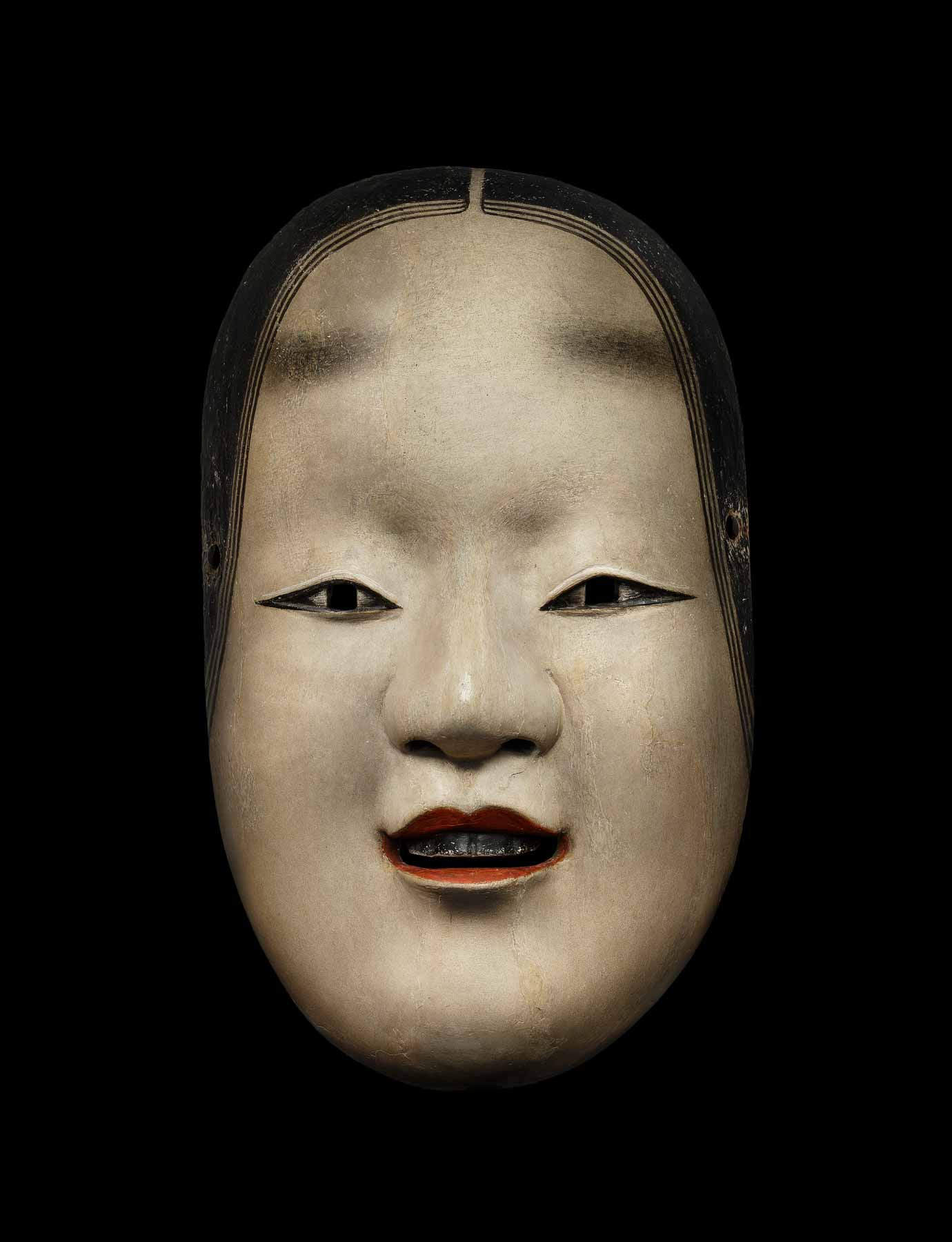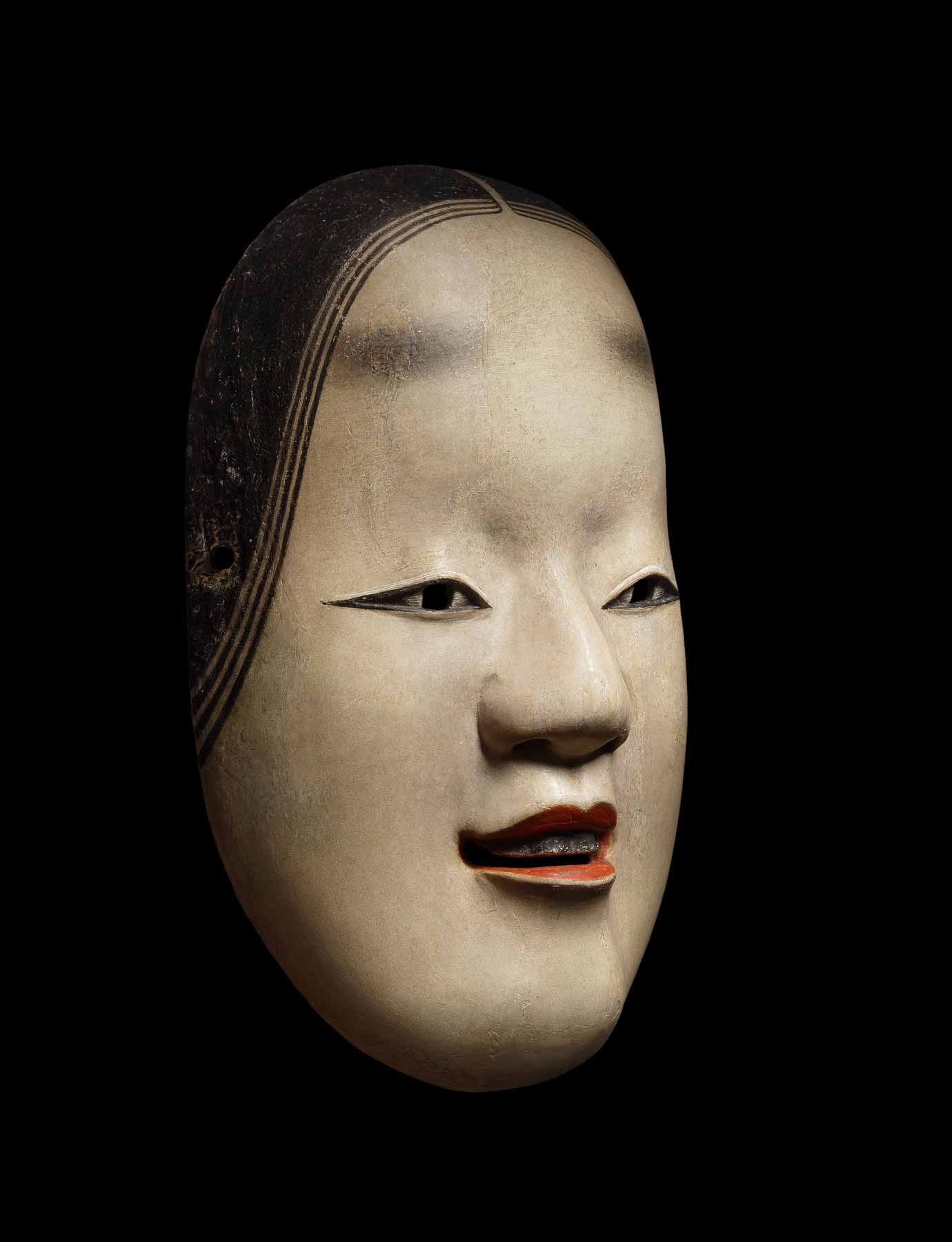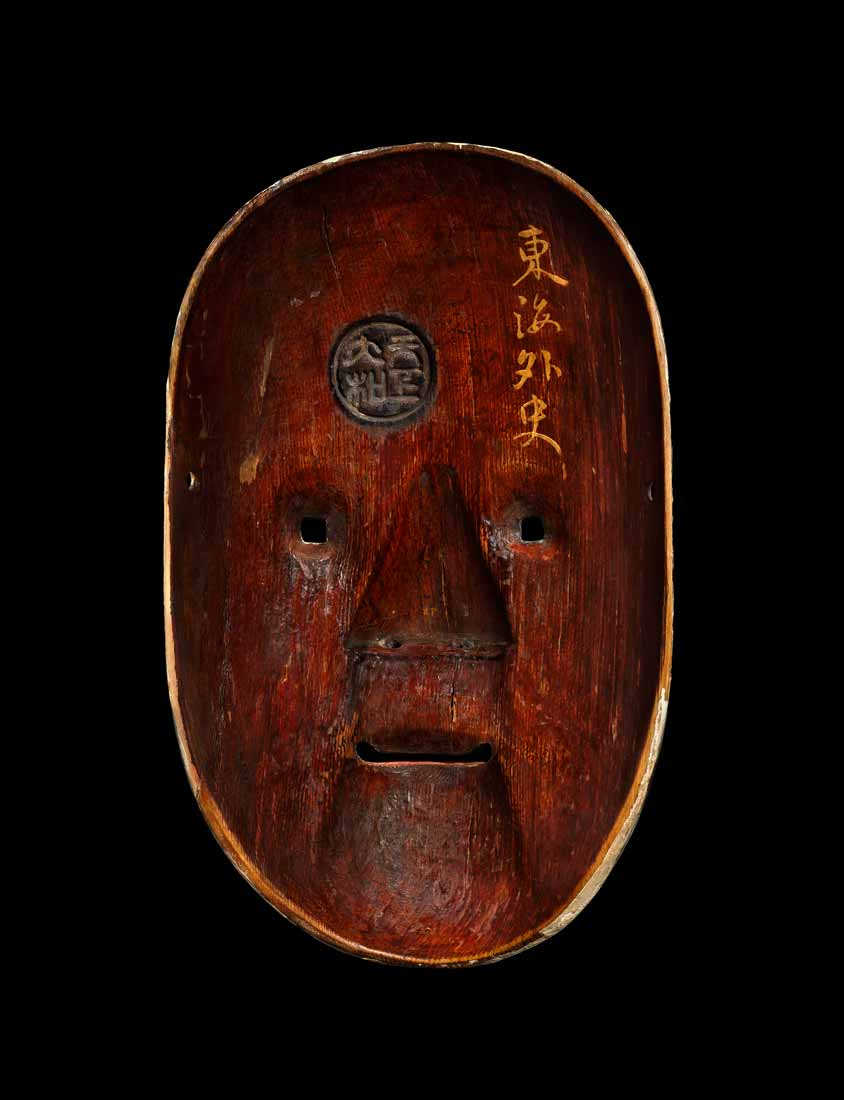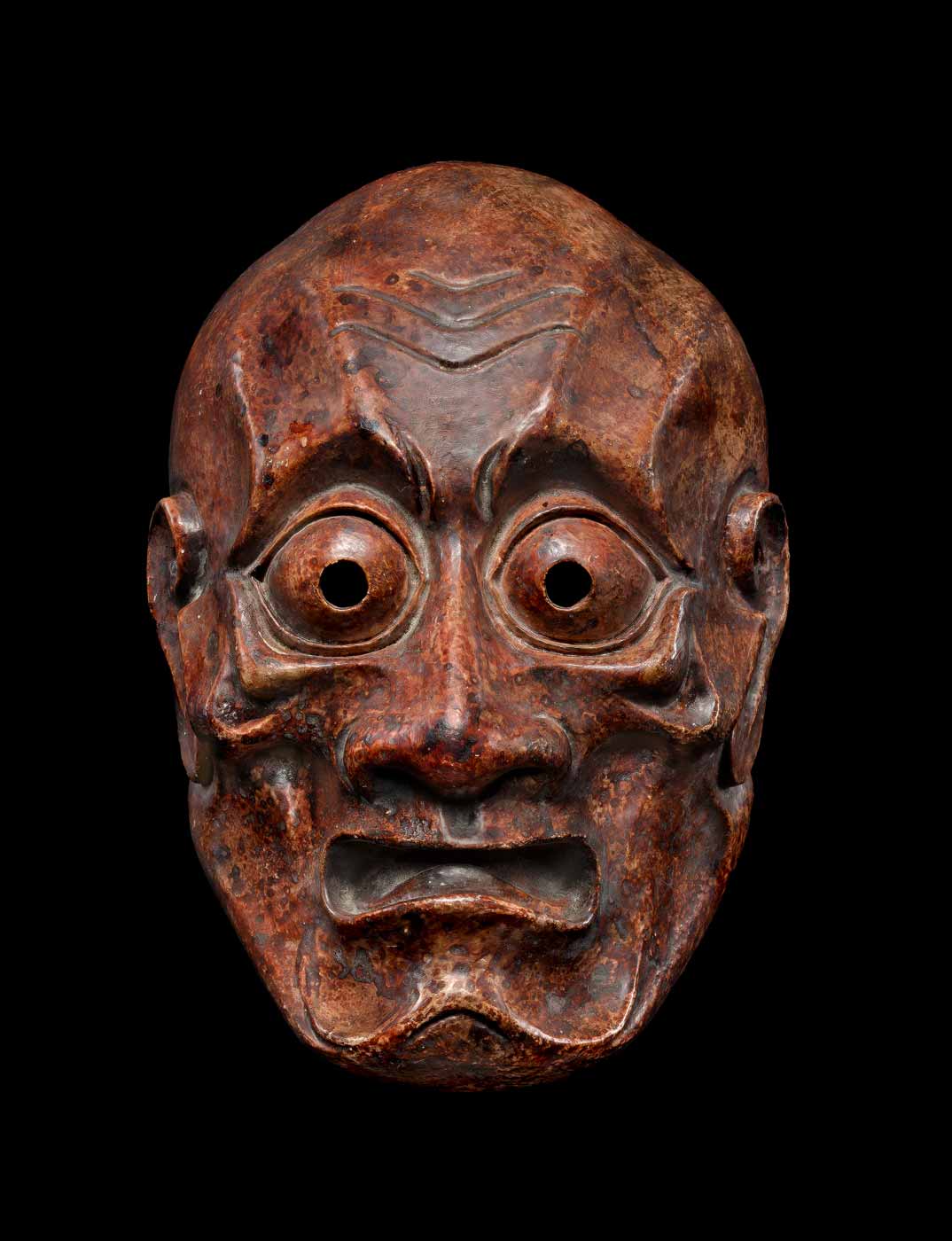Ko-Omote
Mask
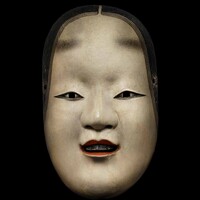

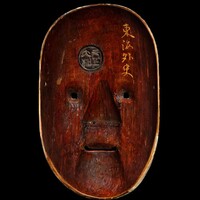
- Contact Us
-
Material
Wood, gesso, polychrome pigments
-
Size
20.9 (h) x 12.9 x 6.7 cm
-
Period
Edo period, 17th Century
-
Box
Kiribako storage box
-
Exhibited
𝐖𝐢𝐥𝐥 𝐛𝐞 𝐞𝐱𝐡𝐢𝐛𝐢𝐭𝐞𝐝 𝐚𝐭 𝐭𝐡𝐞 𝐋𝐞𝐬 𝐅𝐫𝐚𝐧𝐜𝐢𝐬𝐜𝐚𝐢𝐧𝐞𝐬 𝐌𝐮𝐬𝐞𝐮𝐦 𝐢𝐧 𝐃𝐞𝐚𝐮𝐯𝐢𝐥𝐥𝐞, 𝐚𝐬 𝐩𝐚𝐫𝐭 𝐨𝐟 𝐭𝐡𝐞 𝐞𝐱𝐡𝐢𝐛𝐢𝐭𝐢𝐨𝐧 “𝐅𝐥𝐨𝐚𝐭𝐢𝐧𝐠 𝐰𝐨𝐫𝐥𝐝𝐬, 𝐟𝐫𝐨𝐦 𝐉𝐚𝐩𝐨𝐧𝐢𝐬𝐦 𝐭𝐨 𝐜𝐨𝐧𝐭𝐞𝐦𝐩𝐨𝐫𝐚𝐫𝐲 𝐚𝐫𝐭” (𝐉𝐮𝐧𝐞 𝟐𝟐 - 𝐒𝐞𝐩𝐭𝐞𝐦𝐛𝐞𝐫 𝟐𝟐, 𝟐𝟎𝟐𝟒)
Description
𝐊𝐨-𝐎𝐦𝐨𝐭𝐞
Noh mask of Ko-Omote
Carver: Omiya Sanemori Yamato
Seal engraved by burning: “Tenka ichi Yamato”
Signed on the reverse in gold lacquer “Tōkai Gaishi” by the former owner Yamauchi Yōdō* Gaishi (Tōkai Gaishi), the feudal lord (daimyo) of the Tosa clan
Yamauchi Toyoshige (山内 豊信?, 1827-1872) was a prominent daimyo of late Edo period Japan. He is also known by his gō "Yōdō" (容堂). As lord of the Tosa domain of the Shikoku region, he carried out reforms with the samurai Yoshida Tōyō. During the purge of Ansei (1858-1859), he was released on probation and then retired. In 1862, he was named sanyo (参与). In 1867, he advised the shogun Tokugawa Yoshinobu to carry out the Taisei houkan (return of the emperor to power).
Ko-omote is a noh mask representing a girl in the first blush of womanhood. The full cheeks, engaging, full-lipped smile, dimpled chin, and eyes that swerve up at the sides suggest an outgoing, engaging personality. The "caterpillar" eyebrows are painted high on a full forehead and the black hair parted in the middle has three loose strands on each side etched out with a carving tool. Ko-omote is used both for supporting roles tsure ツレ by all schools of noh and for main shite シテ roles portraying young women by the Kita and Konparu schools.
